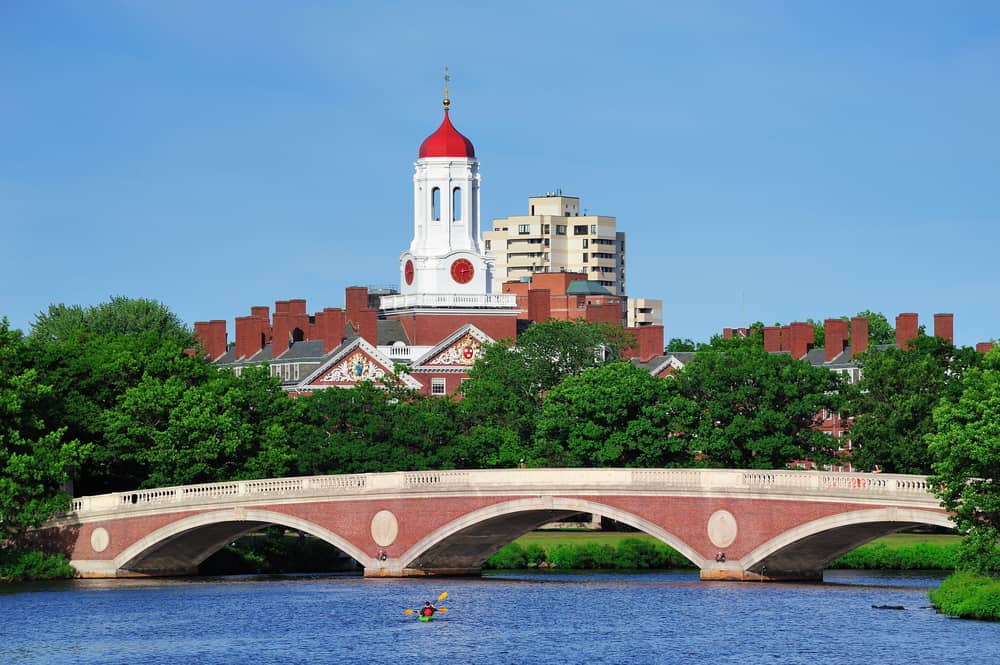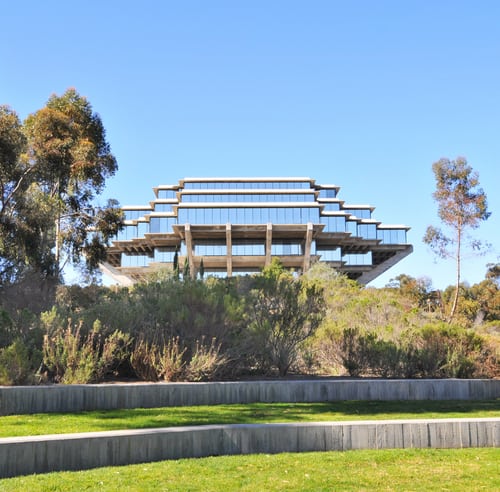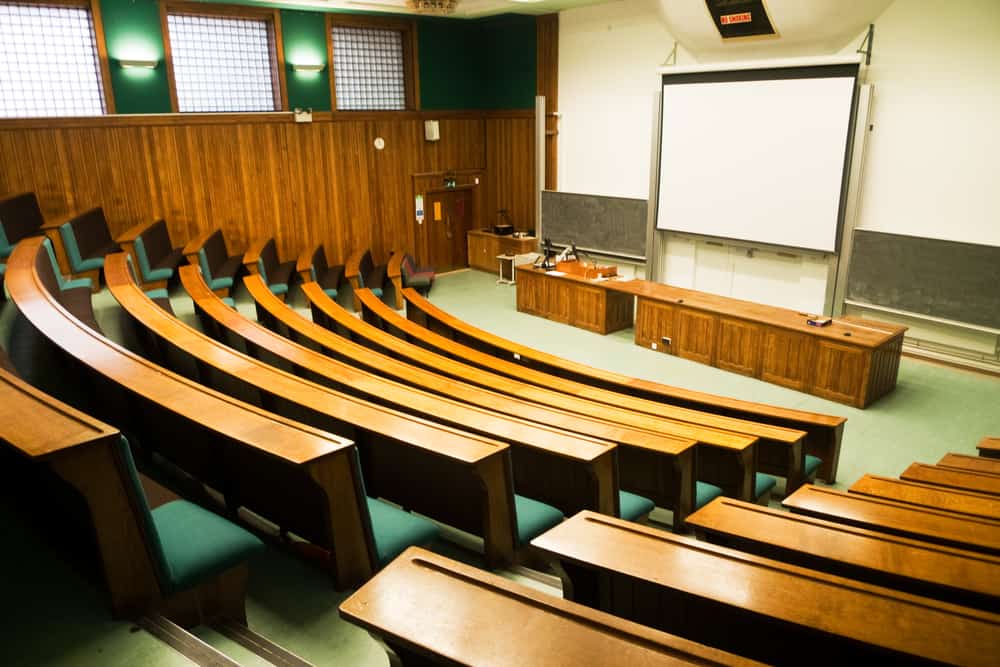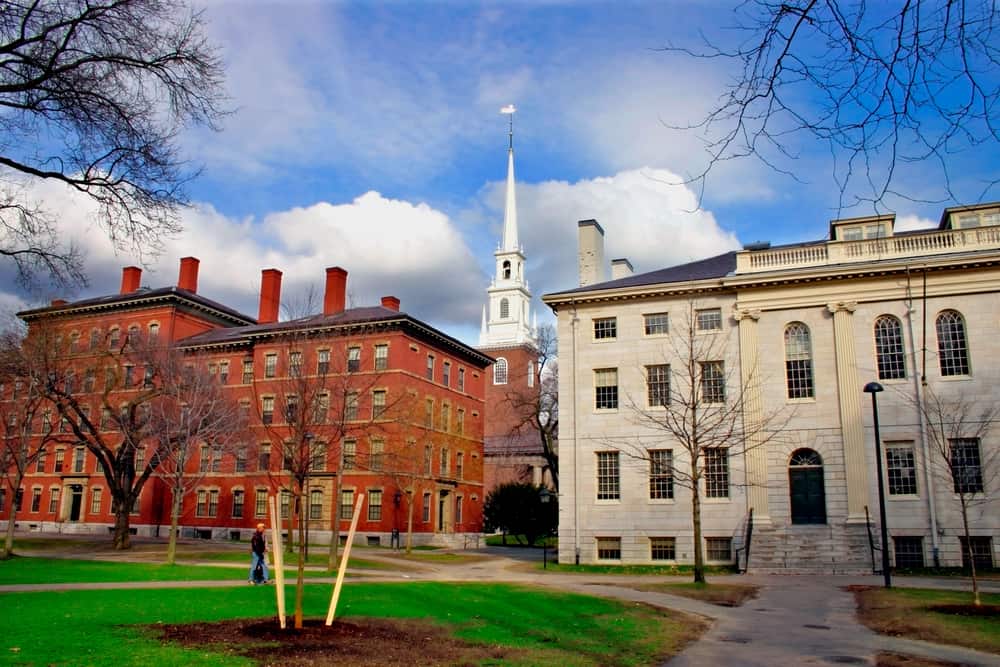
Most students who hope to earn a bachelor’s degree will enroll at a university. The schools that students dream of attending are almost always research universities.
It’s far less common for teenagers to end up at a college.
I find that reality unfortunate because a college can often provide a better education for undergraduates than a research university. And it’s for that simple reason that both of my children ended up earning bachelor’s degrees at colleges. In fact, neither one of them even applied to a university.
What’s wrong with universities for undergrads? It’s the deeply ingrained institutional priorities of these universities that trouble me.
Universities and Research
The No. 1 priority of research universities is…….RESEARCH!
Within academia, it’s not a secret that this heavy reliance on research is often detrimental to undergraduates because of what routinely gets short shrift – undergraduate education.
The ability to teach undergrads is rarely valued at research universities and even the rare professors who would like to be superb teachers do not receive the training to do so.
Unlike elementary and high school teachers, doctoral students usually do not receive formal training in how to teach. PhD programs are focused almost entirely on creating researchers.
Academic departments rarely require any training for its professors. Surveys of 3,500 faculty members at the University of Florida system, for instance, found that 80% had never taken even one class on how to teach. When it comes to teaching, many professors are rank amateurs.
Universities and Graduate Students
The teaching that professors do conduct is primarily focused on mentoring graduate students on how to become excellent researchers. Graduate students, who may be attracted to academia because of the prospects of teaching undergraduates, often come to the realization that focusing on teaching skills is a dead end. If their goal is to land a tenure-track position at a university, grad students need to devote their time to publishing papers.
 Graduates students who are initially excited about the prospect of teaching can lose that enthusiasm fairly quickly. I was talking to a doctoral candidate at University of California, San Diego, recently who said that she and many other doctoral students that she knows at the university were initially excited about the prospects of teaching, but they became disillusioned and discouraged when the professors in their respective departments not only deemphasized it but in some cases even bragged about being poor teachers.
Graduates students who are initially excited about the prospect of teaching can lose that enthusiasm fairly quickly. I was talking to a doctoral candidate at University of California, San Diego, recently who said that she and many other doctoral students that she knows at the university were initially excited about the prospects of teaching, but they became disillusioned and discouraged when the professors in their respective departments not only deemphasized it but in some cases even bragged about being poor teachers.
You can become a professor and eventually earn tenure without possessing teaching skills or even the desire to teach. In fact, it can hurt a graduate student’s chances of receiving a doctorate and support from their academic advisors if they express an interest in teaching.
Here is a 2015 article in The Chronicle of Higher Education that illustrates the plight that doctoral students can face if they let slip that they would rather focus on becoming excellent teachers while they are graduate school rather than excellent researchers:
How I Came Out of the Liberal-Arts Closet
Realities of Undergrads at a Research University
Who teaches undergrads
At research universities, undergraduates are the third priority after professor research and educating the next crop of PhDs. While producing graduate students is labor intensive, it’s much cheaper to teach undergrads because they can be largely  taught in lecture halls.
taught in lecture halls.
Undergraduates foot much of the tab for expensive graduate programs and for star professors, including Nobel Prize winners, who rarely teach. In what has been characterized among higher-ed insiders as a bait and switch, smart undergrads are attracted to research universities by the presence of great scholars, but they routinely find they have little-to-no access to them.
To recruit or retain professors, research universities will sometimes promise to cut their course load. Rebecca Blank, the chancellor of the University of Wisconsin, Madison, acknowledged the practice recently in an interview with the Wall Street Journal. According to the article, Blank said that 15% of her professors last year received outside job offers, and as chancellor, she bids against those offers in part by cutting the course loads of researchers so they will stay.
“I am an economist,” Blank said in the interview. “I live in a market.”
At research universities, graduate students and adjunct professors do the majority of teaching. Adjuncts are often part-timers who receive low pay and often no benefits and are not on the tenure track. The percentage of adjuncts now exceeds tenured professors in the nation’s universities.
At some universities even undergraduates are hired to teach other undergrads! A scathing 2013 report written by a group representing thousands of grad students throughout the 10 University of California campuses, noted that undergrads were increasingly leading sections and discussions instead of graduate students.
For more than four decades, according to the Harvard Political Review, Harvard undergrads have led sections, graded assignments and held office hours. You can read about this phenomenon here:
Harvard Undergrads are Teaching Each other and Harvard Doesn’t Want to Talk About It
High-stakes testing
 When there are dozens or hundreds of students in many classes, grading assignments and tests can be overwhelming for the graduate students who typically do the scoring. Consequently, there can be few opportunities to earn a top grade. There may be just a mid-term and a final. Having a bad day or studying the wrong material can be disastrous for a student who may have only two chances to ace a class.
When there are dozens or hundreds of students in many classes, grading assignments and tests can be overwhelming for the graduate students who typically do the scoring. Consequently, there can be few opportunities to earn a top grade. There may be just a mid-term and a final. Having a bad day or studying the wrong material can be disastrous for a student who may have only two chances to ace a class.
When a student is in smaller classes, which are standard at colleges, there can be more opportunity to show what they know. A student may receive a grade based on papers, class participation, extra-credit opportunities, classroom presentation, quizzes and tests. The stakes for any one grading opportunity aren’t as high. It’s also much easier to ask a professor a question when he or she is standing next to you rather than 20 rows away in a lecture hall.
Missing Mentors
There is a price to pay for tenured professors being largely removed from the academic lives of undergraduates.
Studies have repeatedly shown that undergraduates have a much better experience in college if they have professors who get them excited about learning and if they find mentors. A mentor can help an undergrad not only navigate what can be a bewildering path through college, but can also be incredibly helpful in advising students on graduate and professional school opportunities, as well as providing much-needed recommendations for advanced degrees.
A friend of mine, who is a tenured professor at a prestigious research university, tells me that he gets requests from undergrads hoping to go to medical school who need a recommendation from a science professor. My friend will tell these seniors that he can’t help them because he doesn’t know who they are. After all, he teaches undergrads in lecture halls.
Sometimes the students persist and ask if my friend would get a cup of coffee or lunch to get to know them well enough to write a recommendation. The professor always turns them down. My friend’s son, by the way, graduated from a liberal arts college and he has marveled at the personal attention that his son received from his professors.
Academic Freedom and Learning
Students can also be collateral damage thanks to academia’s embrace of academic freedom, which is a phenomenon that isn’t just  confined to research universities. Here is how Kevin Carey, a highly respected higher-ed commentator, frequent New York Times contributor and the author of a new book, The End of College: Creating the Future of Learning and the University of Everywhere, describe the clash of this professor privileges and student learning:
confined to research universities. Here is how Kevin Carey, a highly respected higher-ed commentator, frequent New York Times contributor and the author of a new book, The End of College: Creating the Future of Learning and the University of Everywhere, describe the clash of this professor privileges and student learning:
Under the theory of “academic freedom,” which was originally advanced to shield faculty scholarship and speech from politics and administrative caprice, professors were given wide latitude to design courses however they liked. They did so largely in isolation, with little outside help or supervision. Their teaching was never evaluated by experts. Nobody checked to see how much their student learned compared to other students in similar course.
This reality led to a system where teachers taught what they wanted rather than the institution examining what students should know and designing appropriate courses. The number of schools that require all students to take a core curriculum like Columbia University, University of Chicago, Reed College and St. John’s College have dwindled dramatically.
Shielded by academic freedom, professors also routinely ignore the findings of psychology and cognitive science on how students learn. While some professors have explored methods to improve their teaching, at this point they remain outliers.
Why Families Haven’t Noticed
Families have not appreciated this bias against undergraduates at universities because there has been little to compare it against. The vast majority of Americans with degrees have graduated from universities as opposed to colleges. At colleges the emphasis is on teaching undergraduates and there usually are no graduates students. Only two or three percent of students earning bachelor’s degrees attend liberal arts colleges.
Undergrads Teaching Undergrads!
 Over the years, there have been some efforts to provide undergrads with a better academic experience, but they have often fizzled. In the first edition of my book, The College Solution, I wrote about one such effort at Harvard that made the front page of The New York Times back in 2007. Here is the article:
Over the years, there have been some efforts to provide undergrads with a better academic experience, but they have often fizzled. In the first edition of my book, The College Solution, I wrote about one such effort at Harvard that made the front page of The New York Times back in 2007. Here is the article:
Harvard Task Force Calls for New Focus on Teaching and Not Just Research
The article discussed how a group of professors had banded together to explore how undergraduate education might be improved at the Ivy League school. A professor quoted in the article lamented that some undergraduates, after spending four years at Harvard, didn’t know a single faculty member well enough to ask for a letter of recommendation.
One student, who was interviewed, suggested that undergraduates ought to know that professors are too focused on research to put much effort into what happens in the classroom.
“You’d be stupid if you came to Harvard for the teaching,” a Harvard senior and a Rhodes scholar told The Times’ reporter. “You go to a liberal arts college for teaching. You come to Harvard to be around some of the greatest minds on earth.”
And he had more to say: “I think many people (at Harvard) spend a great deal of their time in large lecture classes, have little direct contact with professors, and are frustrated by poorly trained teaching fellows.”
The efforts by the band of Harvard profs ultimately failed. Many years later, Harvard is embarking once again on exploring ways to help undergraduates.
Research universities occasionally do explore ways to improve teaching, but it’s usually a modest effort. Here is a link to an article in The Chronicle of Higher Education that Carolyn Thomas, the dean for undergraduate education at the University of California, Davis, wrote in March 2015 about the need for universities to pay more attention to teaching quality.
Don’t Divide Teaching and Research
Bottom Line:
I’m not suggesting that undergrads should avoid all research universities, but I think students who choose this option need to be aware of what the mission of these institutions are. Most students pick universities because they are familiar names. Or they are also attracted to “school spirit,” which usually translates into Division I football and basketball. Or for other superficial reasons that have nothing to do with getting an education.
I would urge families to simply be smarter about their educational choices.

What in enlightening piece of knowledge with incredible reading flow. My soul blesses you!
That said, I sure would have made other choices if I was aware of this when applying to schools. I would at least approach my years at university very differently than I did. I’m gonna be sure to share this to those around me.
Thank you for this… like a lot…
I am a 1st-year Ph.D. student at a “Research 1” university.
Every single thing you said here is true, particularly this: “Undergraduates foot much of the tab for expensive graduate programs and for star professors, including Nobel Prize winners, who rarely teach. In what has been characterized among higher-ed insiders as a bait and switch, smart undergrads are attracted to research universities by the presence of great scholars, but they routinely find they have little-to-no access to them.”
Don’t you just love this quote?:
“You come to Harvard to be around some of the greatest minds one earth…”
He forgot to add:
“…And if I hang around these great minds for four years, lots of people will mistake me for one of them.”
If you are interested in pursing research as an undergraduate, you are much better off at an institution where the research opportunities are accessible. Many state universities have programs specifically tailored to ‘get your feet wet’ in research (see the post by Mary on JMU). It is the rarified research programs that are least inviting or useful to new practitioners.
Some bad information in this article. What gets one a tenure track job and eventually tenure is not papers but *funding*. It’s all about money. You can publish a stack of papers, but if those don’t reach the circles of the people at NSF and other agencies who hand out grants, it’s all for naught.
A university takes 50-80% of any grant a professor receives as overhead. Private schools often take more than state schools. This means that if a physics professor gets a $500k grant to study a topic, only $250k or so will be available to him/her for lab equipment and graduate students/postdocs. The school merely provides a building and very basic materials; any specialized equipment or chemicals needed for the experiments must be paid for from the grant. Basically, the university takes $250k and provides nothing in return.
That $250k more than covers a professor’s salary for the year. The $250k the professor gets to use sounds like a lot, but in terms of the labor it buys, it’s not much: after health benefits and stipend (+ tuition for graduate students), that’s about 2.5 postdoc years or 4 graduate student years. It’s ok, but it’s not enough to sustain a program for very long. The professor needs to get several of these grants to do that.
People assume that the university professor’s job is to advance knowledge and teach students. No, universities are a business like any other. The professor’s job is to bring in money for the university. Let me state that again.
The professor’s job is to bring in money for the university.
It’s no different from an engineer at a company or anyone else who works for a living. Everything the professor does is just a means to accomplish that. Teaching brings in money via tuition, but it’s a drop in the hat compared to research money. A single intro-level course brings in $60k or so ($2000 per student x 30, or so); high-level courses, which require more advanced knowledge, net significantly less because they’re only taken by 15-20 students.
With all the prep time required, 3 courses consume a semester and won’t give the professor enough time to accomplish much research. The university can bag $180k from those courses’ tuition money. If the professor spends those 3 months writing 4-5 successful research grants, the university can easily net $500k or more, depending on the field.
I have a young graduate who has been admitted to Wellesley and UCLA. She likely will have financial aid from both, Although more will come from UCLA. She’s a Biology student, and has been admitted to the major at UCLA. She’s a California resident, and has lower tuition.
Question – Which one? UCLA has incredible rankings worldwide, and is a research university. HELP!
Hi David,
If the child wants to attend lecture classes throughout her four years that have hundreds of students (or more), be taught by grad students and run the risk of not knowing any of her professors well enough to get a recommendation for grad school or jobs, I’d pick UCLA.
If you want a school where she will have interactive learning in small classes, be taught by real professors, easily find mentors and boost her chances of getting into grad school, Wellesley is the very clear winner. I don’t think it’s any contest!
Lynn O.
Lynn,
Thanks, this is a great post. However, I think it’s important to remember that not all “universities” are research universities. I went to a small liberal arts university that focused on undergrads and only had a few graduate programs. The faculty there were amazing and definitely focused on teaching students. They really listened to students; I even got some of them to change class schedules when I saw there was a class that I wanted to take which had traditionally been offered at at time I couldn’t take it.
After that, I went to Yale and got a PhD in biology and there, many of the faculty were definitely more focused on research than teaching. There were some amazing faculty like my research adviser who excelled at both. There were also some who clearly didn’t really care about teaching and only did it because they had to. I think it’s a shame that universities don’t have some professors who focus on teaching and others who focus on research. Different skills are needed for teaching compared with research. I think both students and researchers would benefit from this kind of separation.
I think the only big disadvantage of my small liberal arts school was that at Yale, students had a chance to work in a lab that does advanced science. My small school simply didn’t have the resources to do the kinds of things that the undergrads I taught at Yale got to do.
Overall though, I had a great experience at a small school and it prepared me well for the future.
My son attends James Madison University (JMU) in Virginia, which is state supported. It is rather unique in that although it is a fairly large university (about 18,000 undergraduates and about 1,800 grad students), it is highly focused on undergraduate education. All undergraduate courses are taught by professors. My son chose it over Virginia Tech (VT) for his major of Geographic Information Science/Geographic Science, because of its undergraduate focus and ability to have more hands-on experiences with the technology. He has not been disappointed. The department at JMU has no graduate program, so he has been able to participate in numerous research projects, has had a position as an assistant with a professor as part of an independent study, and has had a professor-supervised internship. He has another professor who has informally taught him, on the professor’s own farm, how to run sustainable farming projects, something in which my son has a strong interest. He has had at least six professors that he counts as friends and mentors. He is leaving college a different person than when he arrived and has grown immensely, and this is largely due to the close contact he has had with professors. JMU caps Mathematics and English classes at 35 students, and they have a rich general education program grounded in the liberal arts that all students must complete, even if majoring in science, engineering, or technology. All students must take courses in English, Math, Science, Oral Presentations, an internationally focused course, History, etc. One of my son’s friends who chose to study the same subject at VT did not have nearly the opportunities in research and one-on-one time with professors, as most of that has been reserved for the graduate students. I point this out, because most people think they must go to a small college in order to experience an undergraduate focus. JMU is one of only a few larger colleges that mainly focus on undergrads. I believe this is also true of Miami University of Ohio, Appalachian State University in NC, and there are probably more that I don’t know about. Small colleges are probably the best options for undergraduates to have strong relationships with professors, but for those who want a larger setting and for whom a state supported university makes more sense financially, they may want to consider schools like JMU, Miami of Ohio, or Appalachian State, where they can have a larger school experience without the large lecture classes and teaching assistants.
Thank you, Lynn – I hope that many students will read this! After studying (and teaching) in a college and in a university, I understand and agree with this perspective. It is an institutional reality, and many high school students simply do not have the amount of life experience to think about the aspects that you bring to the surface in this article. Especially I find that young students are focused on the “brand” name and the “school spirit” as in sports 🙂 I will continue to show this article to my son (who is now applying to colleges) and hope that he “gets” it at some level at this stage in his life 🙂
Lynn,
Its an excellent post! It opens my eyes when choosing a right school for him in the next few weeks !
Thanks, Hung
I think you’ll find this anecdote relevant:
As I am a professional tutor for Calculus students, I decided to take a look at MIT’s video courseware channel (which is available through multiple outlets). Just to see how it’s done.
First off the lecture format was distressing. Mathematics instruction at this level needs to be personal and interactive. I was also surprised at how many students were there – I didn’t think anyone got into MIT without having taken AP calculus in high school.
Most disconcerting was how many mistakes were made. Several times, subtitles roll across the screen beginning with “What the professor meant to say was…”. Even worse were the mistakes not detected, two of which I incorporated into my own praxis under the heading ‘Traps to Avoid’.
This is not to say that the professors there are anything less than geniuses. I am quite certain that they are all Mozarts in their field. I am also sure that this explains the overall lack of enthusiasm and the dryness of the presentation.
My strong advice to anyone considering MIT (or any of the other schools mentioned in this article) – take calculus in high school or go to a college. You will get much higher quality instruction and more personalized attention.
(And seriously, what’s with the chalkboards? – for what you’re paying, can’t they install a projection system?)
Thanks for sharing your observations about MIT’s courseware channel. Pretty amazing and discouraging!
Lynn O.
Lynn, I couldn’t agree more with your superb post about research universities. My clients who attend small liberal arts colleges (up to 3000 undergraduates), without minimal if any graduate students, have had great opportunities to develop mentorship relationships with professors, assist in faculty research, gain fellowships for their own research projects, present their research at conferences in their fields, and even serve as teaching assistants when they are upperclassmen. For undergraduates who hope to enroll in doctoral programs after college, this experience is crucial, especially since they will be competing with international applicants with perfect GRE scores and students who have worked professionally in research jobs after college. The wisdom in this post is essential when making a choice between a college and a research university.